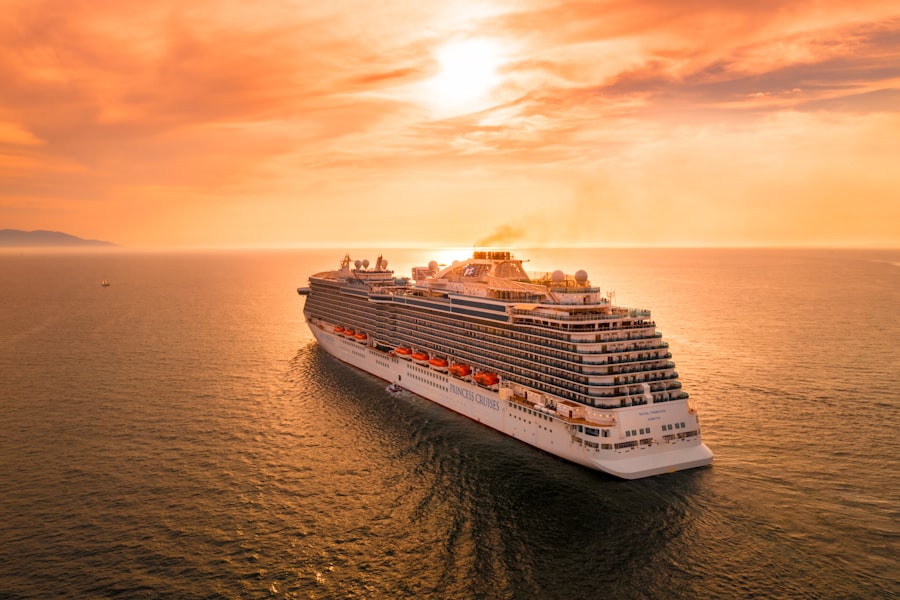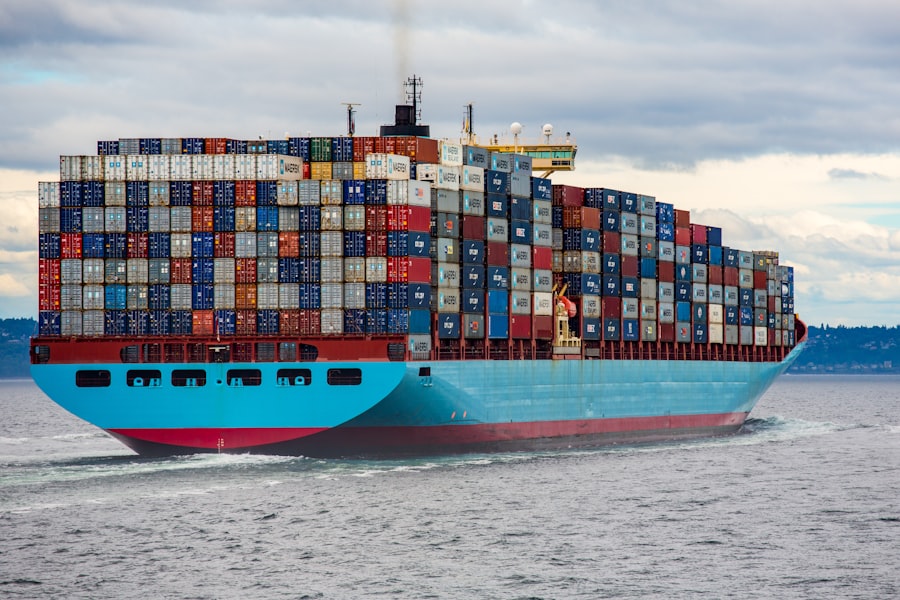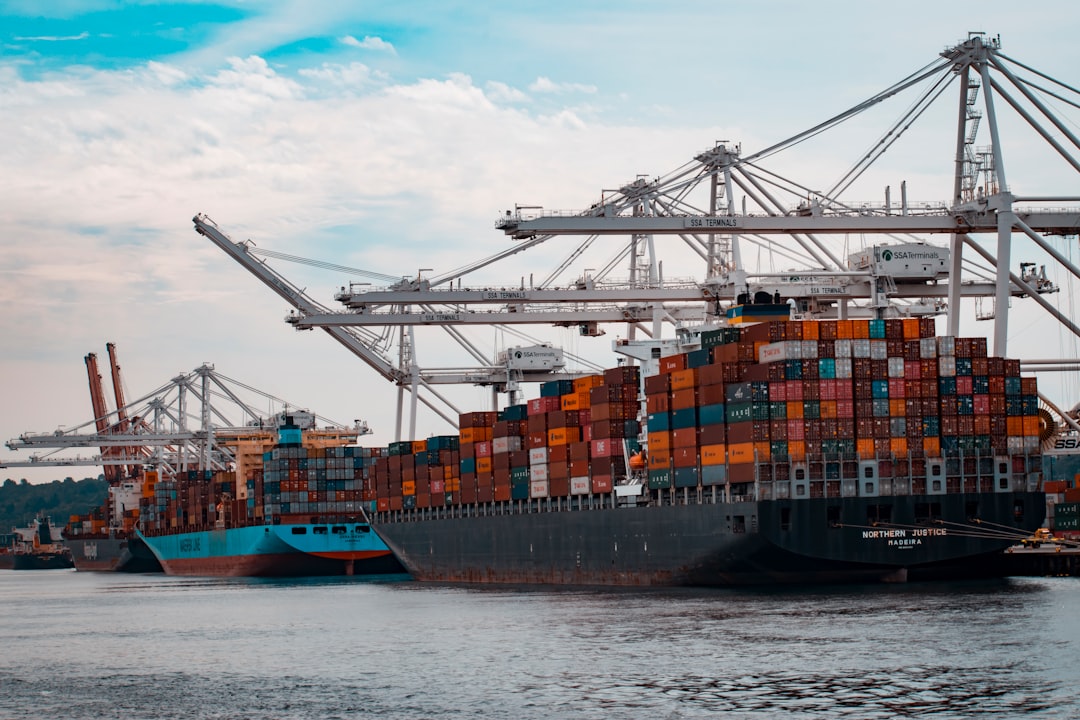The Drake Passage, a body of water situated between the southern tip of South America and Antarctica, is renowned for its tumultuous seas and breathtaking vistas. This narrow stretch of ocean, measuring approximately 600 kilometers (370 miles) wide, serves as a critical conduit for maritime traffic between the Atlantic and Pacific Oceans. Its unique geographical position not only makes it a vital route for shipping but also a popular destination for adventurous travelers seeking to explore the wonders of the Antarctic region.
For many, traversing the Drake Passage is more than just a means of transportation; it is an adventure that embodies the spirit of exploration. The passage has become synonymous with the thrill of discovery, drawing in adventurers, researchers, and nature enthusiasts alike.
As they embark on their journeys, travelers are often captivated by the raw beauty of the surrounding landscapes and the promise of encountering unique wildlife. The Drake Passage stands as a testament to the power of nature, offering both challenges and rewards to those who dare to navigate its waters.
Key Takeaways
- The Drake Passage is a treacherous body of water located between South America’s Cape Horn and the South Shetland Islands of Antarctica.
- The history of the Drake Passage is filled with tales of exploration, discovery, and the challenges faced by early navigators.
- Navigating the Drake Passage presents numerous challenges, including extreme weather conditions, strong winds, and rough seas.
- Top ships for navigating the Drake Passage include ice-strengthened vessels with stabilizers and experienced crew members.
- Features of top ships for navigating the Drake Passage include spacious cabins, observation decks, and expert-led educational programs.
History of the Drake Passage
The history of the Drake Passage is steeped in exploration and maritime lore. Named after the English sea captain Sir Francis Drake, who was one of the first Europeans to navigate these waters in the late 16th century, the passage has long been a focal point for explorers seeking new trade routes and territories. Drake’s expedition in 1578 marked a significant moment in maritime history, as he became the first known person to sail through these treacherous waters, paving the way for future explorers and adventurers.
Over the centuries, the Drake Passage has witnessed numerous expeditions that have contributed to our understanding of the Antarctic region. From early whalers and sealers to modern-day scientists studying climate change and marine biology, this passage has served as a gateway to one of the most remote areas on Earth. The rich history of exploration in the Drake Passage reflects humanity’s enduring quest for knowledge and adventure, as well as the challenges faced by those who dared to venture into its unpredictable waters.
Challenges of Navigating the Drake Passage

Navigating the Drake Passage is not for the faint of heart. The passage is notorious for its rough seas, strong currents, and rapidly changing weather conditions. Sailors often encounter powerful winds that can reach speeds of up to 60 knots, creating waves that can tower over 10 meters (33 feet) high.
These formidable conditions pose significant challenges for even the most experienced mariners, making careful planning and preparation essential for a successful crossing. In addition to the physical challenges posed by the environment, navigating the Drake Passage also requires a deep understanding of maritime navigation and safety protocols. The unpredictable nature of the weather can lead to sudden storms, which can catch vessels off guard and create dangerous situations.
As such, captains must be adept at reading weather patterns and making quick decisions to ensure the safety of their crew and passengers. The combination of natural obstacles and navigational complexities makes traversing the Drake Passage a formidable undertaking that demands respect and caution.
Top Ships for Navigating the Drake Passage
| Ship Name | Passenger Capacity | Crew Members | Length |
|---|---|---|---|
| Ushuaia | 88 | 38 | 84m |
| Sea Adventurer | 117 | 72 | 101m |
| Ocean Diamond | 189 | 144 | 124m |
When it comes to navigating the Drake Passage, not all ships are created equal. The most successful vessels are those specifically designed to withstand harsh oceanic conditions while providing comfort and safety for passengers. Among these ships are icebreakers, expedition vessels, and luxury cruise liners that have been engineered with advanced technology to handle the challenges posed by this notorious passage.
One notable example is the MV Ushuaia, an expedition vessel that has earned a reputation for its ability to navigate icy waters while offering an intimate experience for travelers. With a capacity for around 90 passengers, this ship provides a cozy atmosphere where guests can connect with fellow adventurers while enjoying stunning views of the surrounding landscapes. Another impressive vessel is the National Geographic Explorer, which combines cutting-edge technology with expert guidance from naturalists and historians, ensuring that passengers not only traverse the Drake Passage but also gain valuable insights into the region’s ecology and history.
Features of Top Ships for Navigating the Drake Passage
The top ships designed for navigating the Drake Passage boast a range of features that enhance both safety and comfort during voyages.
Additionally, many ships offer spacious cabins with large windows that provide panoramic views of the stunning seascape, ensuring that travelers do not miss out on any of the breathtaking scenery.
Moreover, modern expedition vessels often include amenities such as observation lounges, outdoor decks, and even hot tubs, allowing passengers to relax and unwind after a day of exploration. Onboard dining experiences are typically curated to reflect local cuisine, providing travelers with an opportunity to savor regional flavors while enjoying their surroundings. These thoughtful features contribute to an overall enriching experience as passengers navigate one of the most challenging maritime routes in the world.
Safety Measures for Navigating the Drake Passage

Safety is paramount when navigating the Drake Passage, given its reputation for unpredictable weather and rough seas. Ships designed for this route are equipped with state-of-the-art safety equipment, including lifeboats, life rafts, and advanced communication systems that ensure constant contact with maritime authorities. Crew members undergo rigorous training in emergency procedures and safety protocols to prepare for any potential challenges that may arise during a crossing.
In addition to onboard safety measures, many vessels also employ experienced navigators who possess extensive knowledge of the Drake Passage’s unique conditions. These professionals utilize advanced technology such as radar systems and satellite tracking to monitor weather patterns and sea conditions in real-time. By staying informed about potential hazards, they can make informed decisions about course adjustments or delays to ensure passenger safety throughout the journey.
Wildlife and Scenic Views in the Drake Passage
One of the most captivating aspects of navigating the Drake Passage is the opportunity to witness an array of wildlife in their natural habitat. The waters are teeming with life, including various species of whales such as humpbacks, orcas, and minke whales that can often be spotted breaching or feeding near the surface. Additionally, seabirds like albatrosses and petrels glide gracefully above the waves, providing a stunning display of nature’s beauty.
The scenic views along the passage are equally breathtaking. As ships traverse these waters, passengers are treated to dramatic landscapes characterized by towering icebergs, rugged coastlines, and expansive vistas that stretch as far as the eye can see. The stark contrast between the deep blue ocean and pristine white ice creates a visual spectacle that leaves a lasting impression on all who embark on this journey.
For many travelers, these moments spent in awe of nature’s grandeur become cherished memories that define their experience in navigating the Drake Passage.
Tips for Passengers Navigating the Drake Passage
For those preparing to navigate the Drake Passage, there are several tips that can enhance their experience and ensure a smoother journey. First and foremost, travelers should pack appropriately for varying weather conditions. Layered clothing is essential, as temperatures can fluctuate dramatically throughout the day.
Waterproof gear is also advisable to stay dry during unexpected rain or splashes from waves. Additionally, passengers should consider taking seasickness medication before embarking on their journey. Given the potential for rough seas in the Drake Passage, being proactive about managing motion sickness can significantly improve comfort levels during transit.
Staying hydrated and maintaining a balanced diet while onboard can also help mitigate any discomfort associated with sea travel.
Famous Expeditions through the Drake Passage
Throughout history, numerous famous expeditions have traversed the Drake Passage, each contributing to our understanding of this remote region. One notable expedition was led by Ernest Shackleton in 1914 when he attempted to cross Antarctica via the Weddell Sea but became trapped in pack ice. His remarkable story of survival has become legendary and serves as a testament to human resilience in facing nature’s challenges.
Another significant expedition was conducted by Robert Falcon Scott in 1911 during his race against Roald Amundsen to reach the South Pole. Scott’s journey through the Drake Passage was fraught with peril but ultimately paved the way for future scientific research in Antarctica. These expeditions not only highlight human determination but also underscore the importance of exploration in expanding our knowledge of uncharted territories.
Future of Navigating the Drake Passage
As climate change continues to impact global weather patterns and sea levels rise, navigating the Drake Passage may evolve in response to these changes. Researchers are closely monitoring environmental shifts that could affect marine ecosystems and shipping routes in this region. The potential melting of icebergs may open new pathways for navigation but could also pose risks associated with increased maritime traffic.
Furthermore, advancements in technology may lead to improved vessel designs that enhance safety and efficiency while navigating these challenging waters. Innovations such as autonomous ships could revolutionize how vessels traverse the Drake Passage, allowing for more precise navigation while minimizing human error. As explorers continue to seek out new adventures in this iconic passageway, it is essential to balance exploration with environmental stewardship to preserve its natural beauty for future generations.
The Ultimate Adventure in Navigating the Drake Passage
Navigating the Drake Passage represents one of life’s ultimate adventures—a journey filled with challenges, breathtaking scenery, and unforgettable wildlife encounters. From its rich history steeped in exploration to its current status as a sought-after destination for adventurers worldwide, this passage embodies both danger and beauty in equal measure. As travelers embark on their voyages through these tumultuous waters, they become part of a legacy that celebrates human curiosity and resilience.
The allure of navigating the Drake Passage lies not only in its physical challenges but also in its ability to inspire awe and wonder at nature’s grandeur. For those who dare to cross its waters, each journey becomes an opportunity for personal growth and discovery—a chance to connect with fellow adventurers while forging memories that will last a lifetime. Ultimately, navigating this iconic passage is more than just a voyage; it is an invitation to embrace adventure in all its forms while honoring the spirit of exploration that has defined humanity throughout history.
Navigating the treacherous waters of the Drake Passage is a feat that only the best ships can accomplish. This notorious stretch of sea, known for its unpredictable weather and rough conditions, requires vessels that are both robust and expertly designed. For those interested in learning more about the challenges and triumphs of maritime travel through this passage, a related article on the best ships to undertake this journey can be found on MyGeoQuest. This article provides insights into the engineering marvels and navigational strategies that make these ships capable of such a daunting task. For further reading, you can explore more about this topic by visiting this page.
WATCH NOW! Drake Passage: Earth’s Deadliest Waters Revealed
FAQs
What is the Drake Passage?
The Drake Passage is the body of water between the southern tip of South America and the northern tip of the Antarctic Peninsula. It is known for its rough seas and challenging sailing conditions.
What are the best ships for navigating the Drake Passage?
The best ships for navigating the Drake Passage are typically expedition cruise ships that are specifically designed to handle the rough seas and extreme weather conditions of the region. These ships are equipped with reinforced hulls, stabilizers, and experienced crew members.
What features should I look for in a ship for navigating the Drake Passage?
When choosing a ship for navigating the Drake Passage, look for features such as ice-strengthened hulls, stabilizers to minimize the impact of rough seas, experienced crew members, and amenities that will make the journey more comfortable, such as spacious cabins and observation decks.
What are some popular ships that navigate the Drake Passage?
Some popular ships that navigate the Drake Passage include the National Geographic Explorer, the Ocean Endeavour, the Sea Spirit, and the Silver Explorer. These ships are specifically designed for expedition cruising in polar regions and offer comfortable accommodations and amenities for passengers.
What should I expect when sailing through the Drake Passage?
When sailing through the Drake Passage, passengers should expect rough seas, strong winds, and potentially challenging sailing conditions. However, they can also expect to see stunning scenery, diverse wildlife, and the opportunity to explore remote and pristine landscapes.
